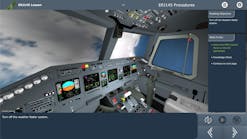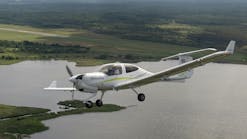FAA Aviation Safety Inspectors (ASIs) have a variety of primary responsibilities that are related to oversight. However, they also are safety advisors. This article describes the current training that helps prepare Airworthiness Inspectors with human factors knowledge and attitude. Johnson currently delivers 16 hours of training to current FAA inspectors.
FAA practices what it preaches by providing a three-day human factors class to all airworthiness inspectors. Most ASIs worked a lot of their career, in industry or military, doing the very same jobs that they now oversee as FAA inspectors. They know the technical content and can relate to the work challenges. This is particularly true with respect to knowledge and attitude about maintenance human factors. Their stories reflect an understanding and appreciation of the hazards associated with human error. The three-day class merely hones their skill to be able to discuss human factors issues with companies that they oversee (Figure 1).
The Department of Transportation, Transportation Safety Institute (TSI), currently delivers the FAA human factors training at the Accident Investigation School in Oklahoma City. About 2,500 ASIs have received this training in the past eight years. Many have also received refresher training by repeating the dynamic course. TSI regularly adjusts content to match class composition.
Class size is limited to ensure sufficient time for extensive student discussion and event investigation activities.
The course begins with highly interactive student introductions, where most offer a personal work experience related to human factors hazards and risk. The stories are often serious and may have involved substantial damage, injury, or loss of life. The class demonstrates that ASIs take their safety job very seriously. They feel the emotion when an organization that they oversee has a serious event. Of course, they are the governmental oversight but they also are a partner to ensure safety.
If the stories get too serious Johnson reverts to an experience with a group of international human factors trainers. In that example, a Chinese student, speaking about communication, warned westerners to be careful when using hand gestures in China. She demonstrated that an extended/spread thumb and index finger meant the number eight in China. A German student, next to her, showed that the same hand gesture meant two (2) in Germany (Figure 2). He further exclaimed that he now he understood why he received 16 beers when he extended the German hand signal at 2-for-1 happy hour in Beijing! Another student, from the UK, indicated that the North American “thumbs up,” in the UK, can be equated to the use on an extended middle finger.
Course Content
There are a variety of applicable topics for a three-day HF class. The Inspectors class assumes that participants have already had some initial human factors training. Instructors capitalize on materials that are available from the FAA maintenance human factors website (www.humanfactorsinfo.com). We also use supplementary materials from current publications like Aircraft Maintenance Technology, Aviation Week and Space Technology, Flight International, and more. Recent NTSB reports are also a way to stay abreast of current accidents/events. Table 1 contains the contents of the June 2015 course.
• Review of Fundamentals
• Communication
• Fatigue
• North American and European Maintenance HF Challenges
• Use of Technical Publications
• Questions to Assess an HF Program Content and Safety Culture
Table 1. Sample contents from June 2015 TSI Human Factors course.
The contents from table one are supplemented, throughout, with example accidents and events related to the topic. One such event is a quick small-group analysis of the Titanic event. This training task took a new spin on the Titanic event. The class was unaware that groups received different versions of the event. One version was reasonably accurate and the ship sank. In another version, all of the threats were managed and the ship arrived safely in New York. The outcomes of the exercise were interesting. The groups that received the “Threat-Managed Version” had too many preconceived notions that influenced their investigation. They failed to observe that threats and errors were managed and the ship arrived safely in New York. It was an excellent reminder to carefully consider all event details before making conclusions of the outcome and contributing factors.
Review of the Fundamentals
The very best golf pros and other professional athletes continue with weekly lessons. For that reason, the course reviews the information in Figure 3. The FAA class pays particular attention to the PEAR Model, which focuses human factors on People, the Environment, the work Actions, and the Resources necessary to complete the job. This model is also encouraged for “Accepted” human factors training for Part 121 operators.
Another “Fundamental” HF topic is worker fatigue and fatigue risk management. The content that supports that section of the course also comes from available FAA content. There is a two hour web-based fatigue awareness training program available at www.FAASafety.com. That training is supplemented with a 20-minute video titled “Grounded.” It is a fictional story about a maintenance manager who suffers from a number of personal life issues that lead to fatigue and bad decisions. The fastest way to that award-winning video is YouTube.
The class also discusses the topic of worker health and safety. Dr. James Allen uses the term “Latent Medical and Environmental Conditions” (LMEC). That refers to all of the conditions related to the health and safety of maintenance workers who are part of an aging workforce. That means the population is at risk for diminished hearing, vision, flexibility, and more. Some of the factors are merely a function of age. Others are a function of the noisy, stress-induced, vapor-ridden environment in which we have worked for a long time. Dr. Allen emphasizes that “worker health and safety is flight safety.” Some say that the topic is for OSHA to worry about, it is not a FAA issue. Dr. Allen suggests that safety is an FAA issue, so we should be cognizant of all factors that affect safety, including worker health.
Other Speakers and Topics
Again, the DOT Transportation Safety Institute is able to do real-time changes to the class. For example, Dr. Michelle Bryant from the Civil Aerospace Medical Institute spoke to the class about an ongoing sleep study is focusing on maintenance workers, flight mechanics, and cargo load supervisors. D. Smith, from DOT TSI, delivered the Department of Transportation view of safety management systems (SMS). Many ASIs commented that Smith covered the topic in a matter that they had not heard in previous courses. His presentation was a complement to their FAA SMS training. Jeff Coe, of the TSI staff, lectured on the topics of sensing, perception, and cognition. He borrowed on the term “fast thinking,” from Daniel Kahneman’s NY Times best seller Thinking Fast…Slow. Coe spoke about conscious and subconscious decision making, using practical examples.
Day 3 of the class capitalized on external speakers as well. That included Jeff Grenier, who brought the current perspective from the safety department of an air carrier. He combined stories form the airlines with discussion of the Dirty Dozen. Pat Duggins spent three hours based on his career in MROs and general aviation maintenance environments.
Safety inspectors are excellent safety ambassadors and human factors advocates. The DOT/FAA classes are great because of the ASI participants. There is extensive discussion in every class. ASIs have commented that they like the mix of other inspectors from GA, 121, 145, and more. The mix of military and civilian experience also keeps the class interesting. The June 2015 class had an average aviation experience of 37 years, which is typical. That makes for some excellent high value human factors “story telling” and shared experience. The end result is a renewed attitude and empowerment for FAA ASIs to help support human factors in maintenance.
Dr. Bill Johnson is the Chief Scientific and Technical Advisor for Human Factors in Aviation Maintenance, from Washington, D.C. He is a regular lecturer for the U.S. Department of Transportation courses related to human factors and accident investigation. He has guided the development and delivery of maintenance human factors training worldwide.






